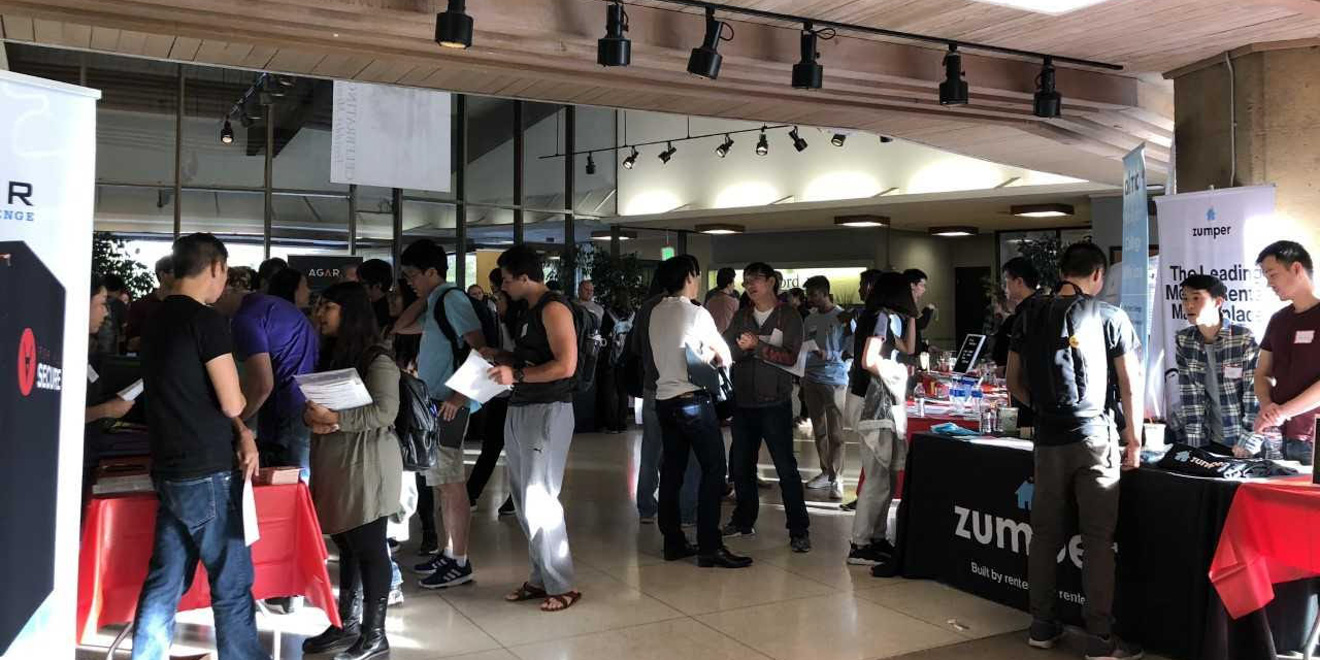This article is the third in a series examining how Stanford — from the institution to its students — handles, allocates and spends money.
Amid a winter quarter wave of career fairs and application deadlines for summer opportunities, some students set out to create opportunities of their own. Given Stanford’s reputation as a hub for entrepreneurial development, it is perhaps unsurprising that many Stanford students have started organizations — from non-profits, to apps, to hedge funds — both before and during college.
According to Chetan Rane ’19, however, “Everyone says there are lots of entrepreneurs at Stanford, but it’s kind of hard to find out who they are and what they’re doing.”
The Daily sat down with five student entrepreneurs to discuss the companies they’ve started and the role of the Stanford community in their work.
Rane and Akshay Ramaswamy ’19 co-founded Alma Campus — which Ramaswamy describes as “LinkedIn for universities” — in Sept. 2017.
“We allow students to look up things like courses, clubs, interests and majors — things you wouldn’t find on LinkedIn — in order to connect with other students on campus,” he said.
The pair’s latest project has been creating an app for Alma, which will be available on Monday. This week, they finished submitting their app to the Apple App Store and Google Play. They also recruited students at the Business Association of Stanford Entrepreneurial Students (BASES) career fair and met with investors including former Yahoo CEO Marissa Mayer ’97 M.S. ’99.
Given the time commitment of managing a business, Sam Gorman ’21 said he views his company, Peerlift, “as a way to have fun, and not just a way to work.”
Gorman started Peerlift at the end of his senior year of high school. Initially, his goal was to provide a centralized platform for low- and middle-income students to find financial resources while applying to college. Although Peerlift reached 40,000 users last year, Gorman said the number of high-quality opportunities available for students remains relatively fixed. In light of this, Gorman and his team are adding to Peerlift’s repertoire by allowing for any working professional to create micro-scholarships. Students will be able to apply to such scholarships with short, one-minute long videos, “kind of like Instagram or Snapchat,” Gorman said.
Like Gorman, Alex Fine ’21 began his entrepreneurial career before arriving at Stanford. He started Quill — an app that uses computer vision algorithms to take a photo of a textbook page and receive a summary of the text in return — in the summer before his junior year of high school. Fine, who was motivated by his experience with dyslexia, said the problem of “getting [the main idea] off the page accurately” inspired him to create the app.
Instead of delaying college to work more on Quill, Fine chose to attend Stanford and began the process of getting Quill acquired. An acquisition involves one company purchasing all, or the majority of, another company’s shares, thereby taking control. For Fine, the process began in Oct. 2017, and Quill was officially acquired in February 2018.
Devon Holland ’22, who founded the letter-writing service Dear Doodles when she was 13, said having a balanced college experience was just as important as the success of her company.
“I really wanted to be able to do both and really dive into the whole college experience,” Holland said.
Dear Doodles, she added, focuses on promoting kindness and empathy for kids through letters, activities, trading cards and stuffed animals.
“The overarching goal for my company is creating a generation of kids in which kindness and inclusiveness is something that is not needed to be thought about,” Holland said.
In the process of her newest venture to create a children’s television show, Holland said she has learned to appreciate being the youngest in the room.
“It gave me a ‘Wow’ factor when I walked into meetings,” she said.
All of the students interviewed acknowledged that their age occasionally draws skepticism, but that being a young entrepreneur often presents more opportunities than obstacles.
“Age is a unique advantage in what we’re working on,” Gorman said. “We are so close to our target audience that there’s actually little to no difference — we are our target audience.”
The young, entrepreneurial spirit at Stanford was, for Fine, a primary driver in his decision to come to the Farm.
“I thought that the culture and the people at Stanford would be such an asset,” Fine said. “So much of my education has not been in school, but in the people I meet [and] the people I talk to.”
Ramaswamy and Rane also emphasized the community of entrepreneurs present on campus, including current students and alumni. One such community was within Cardinal Ventures, “a mini Stanford accelerator,” Rane explained, which facilitated introductions to venture firms around the region.
“Being at Stanford is really cool because you’re surrounded by hundreds of founders of really big companies, and you’ll be surprised how willing they are to help out young people like us,” Rane said.
For students seeking guidance on catapulting their own ventures, Ramaswamy offered parting advice.
“When you’re at Stanford, especially during the fall, everyone’s wrapped up in recruiting so they go to traditional high-profile jobs … things that are safe,” he said. “The biggest thing is taking that leap of faith.”
Contact Emma Smith at esmith11 ‘at’ stanford.edu.
This article has been corrected to reflect the accurate function of Quill, which is to take in a photo and return summary text. The Daily regrets this error.
